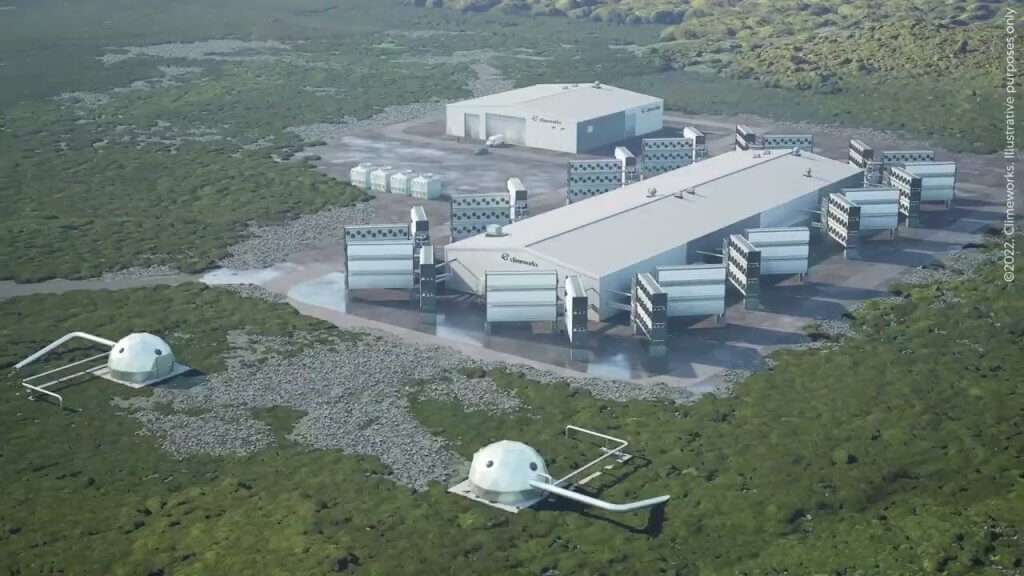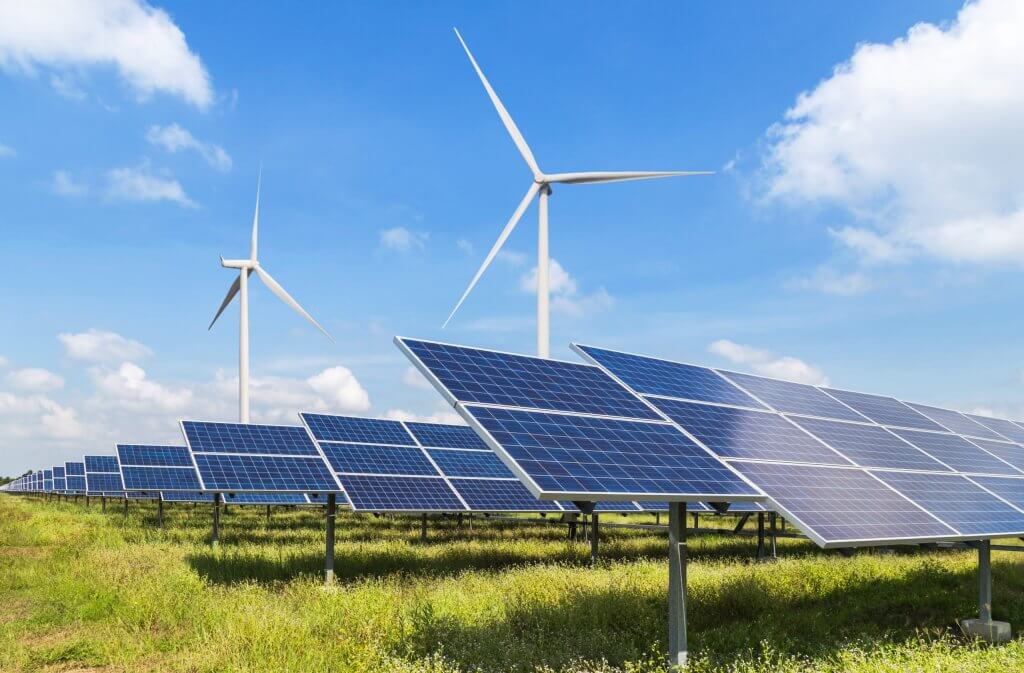
A Way Forward on the Climate Crisis
– By Geoff Strong and Richard van der Jagt –
Time is short for gaining control over our climate before it hits a tipping point, after which we lose the opportunity to turn things around. While our emphasis is the destructive impacts of greenhouse gas (GHG) emissions on our warming climate, fossil fuels also release toxic air pollutants (such as carbon monoxide and nitrogen dioxide), responsible for millions of deaths annually around the globe. We review the various suggestions put forward for reducing carbon emissions and pollutants, then discuss the most viable solution.
Emission Reductions with Continued Support for Fossil Fuels
Government is committed to planting three billion new trees in Canada by 2030. This program is far over-rated as a means to fight climate change, especially the government’s intention to help counter carbon emissions. Strong (2022, 2024) showed that it would take 10 billion mature trees (50-100 years old, not new seedlings) to sequester Canada’s 730 MT of annual carbon emissions. Those statistics make tree planting helpful for drawing down atmospheric CO2 over the next two centuries, but not for countering annual emissions.
The federal government requires all new vehicles sold in Canada to be electric by 2030. This is arguably the most positive part of current federal climate policy for reducing emissions. Transportation accounts for about 25% of all carbon emissions in North America, and about 75% of this is from road vehicles. If all road vehicles were electric by 2035, then that replaces almost 20% of fossil fuels.
The carbon tax has become a major source of debate, where seven provinces have pleaded for it to be removed or not increased further. The federal Conservative Party leads the charge, claiming this tax is hurting lower income families who must choose between paying rent or buying groceries, but they clearly misrepresent the effects of the tax, or else are being deliberately deceptive.
Let’s take a sober look at this tax: Gasoline price at the pump on Vancouver Island was raised by 50 cents/liter between mid-January and mid-April this year, of which only 3.3 cents could be blamed on the carbon tax increase, and we can anticipate further price increases by June. In 2022, gasoline increased by $1.00/liter more by late summer. Much of these increases are simply price gouging by the provider, taking advantage of the fact that the public drives more during summer regardless of price increases; and if $1.00/liter extra doesn’t limit their driving, then the carbon tax increase almost certainly won’t. Lower income families benefit from the tax, receiving more in tax rebates than they pay out. The carbon tax may help convince some to purchase that long-planned EV, but further price increases are more likely to accomplish that.

Carbon Pricing is emphasized by the federal government as a means to convince industry and public to reduce GHG emissions, and they claim an 8% drop in emissions between 2005 and 2020. However, that 8% drop was based mostly on the 2020 reduction to 659 MT due to industry shut-downs during the Covid pandemic. It was followed by increases to 670 MT in 2021 and 707 MT in 2022 (no data yet released for 2023). The use of that one 2020 data point, an aberration, to claim emission reductions is the same cherry-picking tactic used by climate deniers to make false claims. The actual trends from 1990 to 2022 are shown in Figure 1. They then project this trend to reach 30-40% emission reductions by 2030, a further deception. Moreover, since the fossil fuel industry grossly under-reports their emissions, ECCC (Environment and Climate Change Canada) should not rely on industry data either. Media have widely accepted the reductions, but the bottom line is that any claims for emission reductions due to carbon pricing are premature.
“Cap and Trade” in theory is supposed to help limit climate change by creating a market for trading emissions. Under emission trading, a polluter with more emissions than their quota has to purchase the right to emit more. Realistically then, cap and trade simply transfers the responsibility for emissions to someone else for payment, and instead of limiting emissions, it allows continued use of fossil fuels. The climate crisis demands much more stringent measures to stop the use of fossil fuels altogether.
Carbon Capture and Storage (CCS) has been promoted by fossil fuels as the means to capture carbon at the source of emissions, piping it away to underground storage. It fails for several reasons: Most CCS facilities have been constructed with government funding, but all are owned, operated, and reported by the fossil fuel industry. Claims by the industry that they can capture up to one million tonnes of CO2 per year do not account for the emissions from energy required to run the facilities, and captured CO2 has been ‘utilized’ to pump liquid CO2 beneath oil/gas wells to improve recovery efficiency; that is, these are really CCU facilities. The CO2 then presumably moves into the atmosphere. Less than 30 facilities have been operational at any given time, and these cannot make even a minor dent in the 40+ GT of global carbon emissions. CCS has become a blatant disinformation campaign carried out by the fossil fuel industry.
Truthfully, current debates about ‘carbon tax, carbon credits, carbon pricing, cap and trade, and carbon capture and storage should be dropped, along with any government funding for same. ALL are pretexts to continue support for fossil fuels, and do little or nothing to curb emissions.

Direct Atmospheric Capture of CO2 (DAC) is intended to remove CO2 directly from the atmosphere, which would be most effective once emissions are curtailed, and is not covered in detail here. However, best results to date of capturing up to 35,000 tonnes of CO2 per year, fall far short of the millions of tonnes per year needed over the next century to draw down atmospheric CO2. DAC and CCS were recently reviewed for CACOR.
Some argue that Nuclear Reactors to replace fossil fuels are the quickest way around the problem of carbon emissions. However, there are still too many questions concerning safety, environmental issues, and the time required for a nuclear reactor to become operational. Nuclear energy may be a better alternative for isolated communities in Canada’s far-north, but for the more populated parts of Canada, nuclear energy is not optional at this time.
Geo-engineering the upper atmosphere has frequently been proposed for reversing climate warming. The two most frequently mentioned techniques here are direct removal of carbon dioxide (DAC), and limiting incoming solar radiation by spraying the upper atmosphere with sulfate aerosols to reflect incoming solar radiation back to space. Such methods are fraught with great danger because of unknown reactions that could occur from interconnections within nature, for which we still have too little knowledge.
Many suggest that psychological barriers aggravate human attitudes toward climate change, that the public needs to change attitudes to the environment. These attitudes, however, developed over thousands of years and we cannot change human inertia in just a few years or decades.
Most agree that we cannot continue to withdraw Earth’s limited resources indefinitely (see Limits to Growth). However, this too cannot be changed within the timeline available to reverse the climate crisis.
None of the above methods can solve the climate crisis in the next few decades. Working towards a solution may initially involve using more of Earth’s resources for the one-time set-up of renewable energy, but which draw resources away from much heavier demands by fossil fuel industries in the same timeframe. Renewable energy equipment can now be manufactured to be 100% recyclable, ensuring resources for future generations.
The Federal government mandate that all new vehicles sold in Canada be electric by 2030 is possibly the best suggestion in the federal climate policy. Transportation accounts for about 25% of all carbon emissions in North America, and roughly 75% of this is from road vehicles. Therefore, if all road vehicles were electric by 2035 it would replace almost 20% of FF demands and contribute a similar reduction in carbon emissions. The remaining 5% will be added when trains, ships, and planes are electric.
The Way Forward – Renewable Clean Energy Replacing Fossil Fuels
The two essential objectives for reversing the climate crisis are: 1) reducing GHGs and air pollutants rapidly, eventually to ‘near-zero’; and 2) drawing down existing atmospheric CO2 from >428 ppm to pre-industrial levels of <300 ppm.
Nature has provided a way forward for us with several types of clean, renewable energy that can lead us away from global catastrophe. Solar, wind, water flow (hydroelectric), geothermal energy, and ocean waves and currents provide a ready answer. Hydroelectric power here is understood to involve “Run-of-the-river” (ROR) hydroelectricity that does not destroy environments such as with large dams; nor does it interfere with fish migrations or other wildlife. All have been harnessed for small projects for centuries, and all are sourced free from the sun. There is no need for significant new technology to develop or learn, and only minimal new resources are required once operational, since all these systems can be constructed to be fully recyclable.

Local microgrids of renewable energy in new housing or commercial developments can be mandated by municipal governments. These can be initiated at local scales where there is little or no interaction with the fossil fuel industry; i.e., implementation can ignore the fossil fuel industry and simply let market forces cause reductions in fossil fuel ‘demand’, and then the ‘supply’. This is a form of ‘flanking the enemy’ (fossil fuels) and gradually taking over the supply of energy. A mixture of two or more types (e.g., Figure 3) can ensure energy security, while linking to major grids can offer mutual additional security with other microgrids.
The major problem is to convince governments to be fully onside with renewable energy. It makes little sense to be supporting fossil fuels while trying to reduce carbon emissions at the same time as Canada has been attempting. This demonstrates the strong influence that fossil fuels have on governments, but it needs to stop. Recent reports suggest that the federal government supports fossil fuels through subsidies more than fourteen times as much as they provide for renewable energy (see here). Most countries need to change this tact if humans are to be successful in combatting the climate crisis, and here Canada could be a leader. The conversion to renewable energy also assumes: 1) that governments encourage other industries to convert to electric energy; 2) that federal and provincial governments work together to upgrade the major electric grids, favouring west-east over north-south grids to provide mutual energy security between provinces; 3) that eventually most transportation will be electric; and 4) that cross-training courses will be arranged for workers switching from fossil fuel jobs into renewable energy jobs as the demand and supply of fossil fuels collapse.
Conclusions
As fossil fuel use decreases, so too will carbon emissions, while restoring human health from air and water-borne toxic pollution. Removing excess atmospheric GHGs over the next century will eventually stop the warming of our climate. We must address this ‘climate solution issue’ urgently and as efficiently as possible for the health and survival of generations that follow us.
Dr. Geoff Strong is a retired atmospheric/climate scientist in Cowichan Bay, BC, having dedicated more than 60 years to environmental issues.
Dr. Richard van der Jagt is a retired physician in Ottawa, ON with major concerns about the health impacts of the climate crisis.
Both authors are members of the Canadian Association of Club of Rome (CACOR).
cap and trade, carbon capture and storage, carbon pricing, carbon tax, clean energy, climate crisis, direct atmospheric capture, emission reductions, fossil fuels, geo-engineering, geoff strong, Richard van der Jagt
